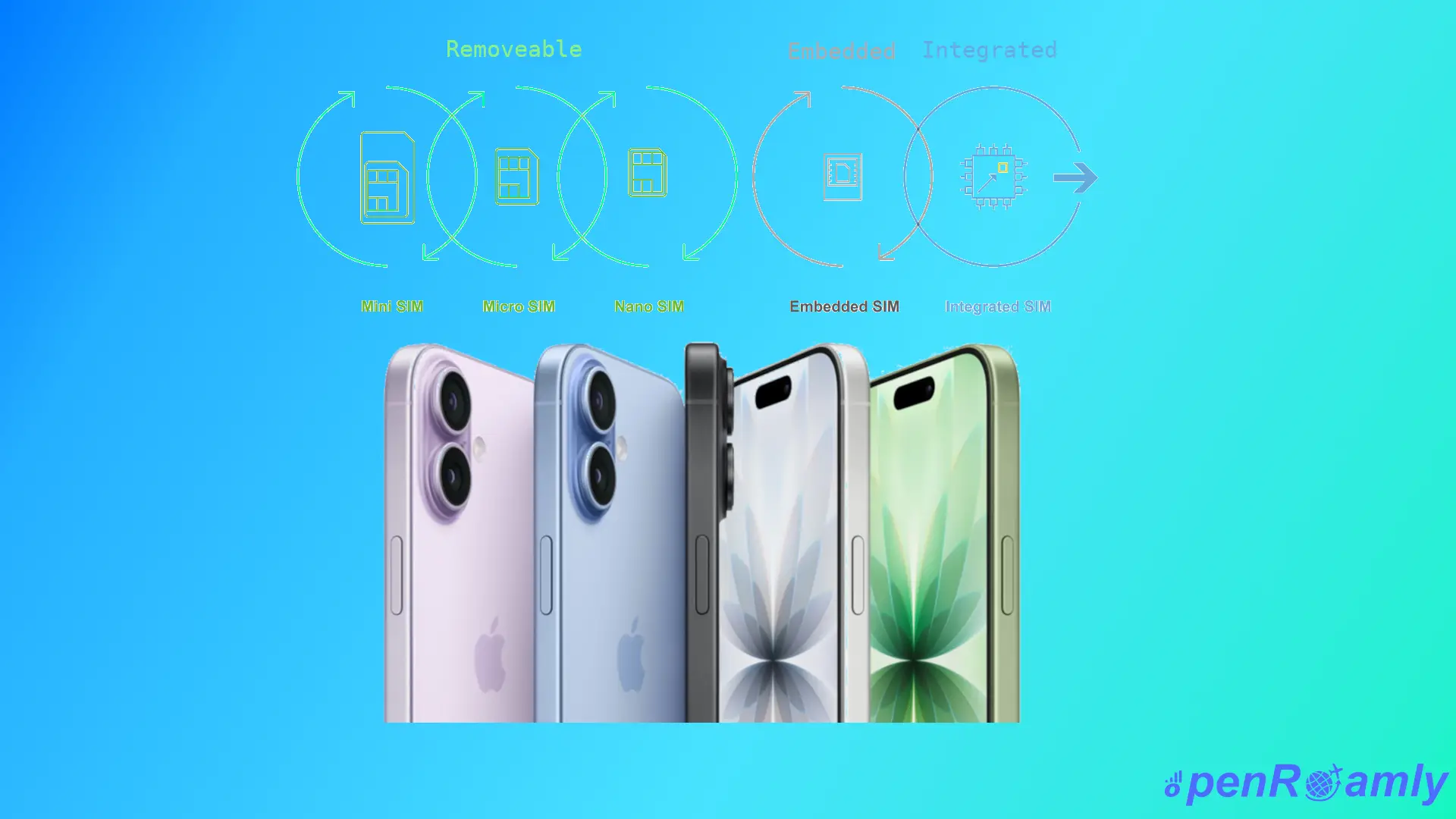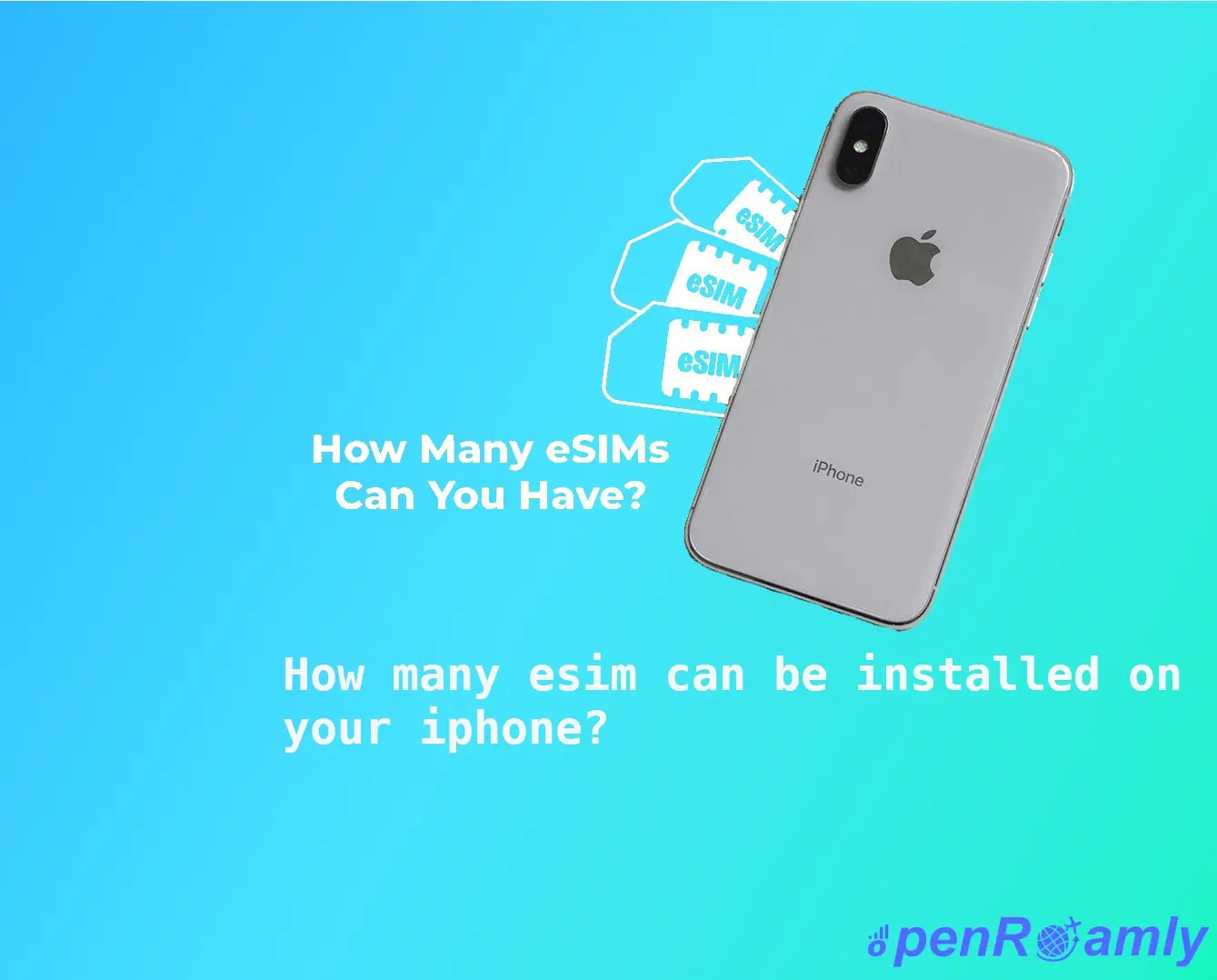iPhone and eSIM: A Journey from Introduction to Global Adoption

Since 2018, Apple has been integrating eSIM technology into its iPhones, signaling a strategic and gradual shift away from physical SIM cards. Through several generations of product evolution, this strategy is set to culminate with the 2025 release of the iPhone 17 series, which will see Apple implement a comprehensive eSIM-only policy in numerous global markets. This article details the history of eSIM support on the iPhone, the differences across generations, capacity limitations, and the evolution of hardware configurations in various regions.

What is an eSIM?
An eSIM (Embedded SIM) is a digital SIM that is built directly into a device's hardware. It allows users to activate a cellular plan from a carrier without needing a physical nano-SIM card. Because it can be provisioned remotely, an eSIM can store multiple carrier profiles, enabling users to switch between numbers with ease. This makes it particularly convenient for international travelers and those who use multiple phone numbers.
iPhone's eSIM Support: A Timeline of Evolution
Initial Adoption: iPhone XS / XR (2018)
The eSIM feature was first introduced, supporting a dual-SIM configuration with one physical nano-SIM and one eSIM.
All subsequent models (iPhone 11 and newer) have supported eSIM, though specific capabilities and quantities vary by region and model.
The Dawn of Dual eSIM: iPhone 13 Series (2021)
In select markets, such as the United States, the iPhone 13 series began supporting two simultaneously active eSIMs, removing the dependency on the physical SIM tray for dual-SIM functionality.
Most other regions continued to feature a hybrid design with a nano-SIM tray and eSIM support.
The US Goes eSIM-Only: iPhone 14 Series (2022)
With the launch of the iPhone 14 series in September 2022, Apple removed the physical SIM card tray from all models sold in the United States, making it the company's first eSIM-only device.
iPhone 14 models in other countries and regions retained the nano-SIM slot, supporting a dual-SIM setup (nano-SIM + eSIM).
Global Expansion: iPhone 17 Series (2025)
The iPhone 17, 17 Pro, and 17 Pro Max are set to be eSIM-only in 12 countries and regions, shipping without a physical SIM tray. These markets include:
United States, Canada, Japan, Mexico
Saudi Arabia, UAE, Qatar, Kuwait, Bahrain, Oman
Guam, US Virgin Islands
The iPhone 17 Air will be Apple's first globally uniform eSIM-only model, meaning it will not have a physical SIM tray in any market, including Mainland China.
Other regions (such as Europe, Australia, South Korea, Singapore, Hong Kong, and Taiwan) will continue to receive iPhone 17, Pro, and Pro Max models with the hybrid nano-SIM + eSIM design.
The Mainland China version of the iPhone 17, Pro, and Pro Max will remain physical nano-SIM only and will not support eSIM. However, while the iPhone 17 Air in China will be eSIM-only, its functionality will be restricted to local carrier-provided eSIM services (e.g., from China Unicom), and international models will not be able to activate local eSIMs within Mainland China.
eSIM Storage and Active Usage
Based on official Apple documentation and other sources:
iPhone XS / XR through iPhone 12 Series: These models can store multiple eSIM profiles, but only one eSIM can be active at a time (alongside one physical SIM).
iPhone 13 and Newer (including iPhone 14/15/16/17 series):
Can store eight or more eSIM profiles.
Can have two eSIMs active simultaneously (for dual-SIM standby) without needing a physical SIM card.
On eSIM-only models (like the US version of iPhone 14 or the upcoming iPhone 17), both active numbers operate as eSIMs.
Note: The ability to use dual eSIMs depends on the device model, iOS version, and the hardware configuration for your region.
It is also worth noting that the Mainland China version of the iPhone 17 Air has a storage limitation: according to Apple's official customer service, this model can only store a maximum of 2 eSIM profiles, compared to the 20 or more that can be stored on international versions.

Summary of Regional Differences (as of 2025)
Region/Market | iPhone 17 / Pro / Pro Max | iPhone 17 Air |
|---|---|---|
US, Canada, Japan & 9 other markets | eSIM-only (no SIM tray) | eSIM-only |
Europe, AUS/NZ, KR, SG, HK, TW, etc. | nano-SIM + eSIM | eSIM-only |
Mainland China | nano-SIM only (no eSIM) | eSIM-only |
Special Note: Although the iPhone 17 Air in Mainland China is an eSIM-only device, its functionality is heavily restricted. International travelers can still use global eSIM providers (like Openroamly) to activate data services outside of China but will be unable to use foreign eSIMs for service within Mainland China.
Future Trends
Apple's eSIM strategy makes its direction clear: the physical SIM card is being gradually phased out. The transition began with the trial in the US market for the iPhone 14, expanded to 12 countries with the iPhone 17, and reached a new milestone with the globally unified eSIM-only iPhone 17 Air. This shift not only saves precious internal space (which can be used for a larger battery) but also enhances device security and convenience for travelers.
As industry standards mature, global carrier support broadens, and major markets like Mainland China potentially ease restrictions, it is highly likely that all future iPhone models will transition to a fully eSIM-only design.
Conclusion
Looking back at the history of the iPhone, the introduction and evolution of eSIM is more than just a technological upgrade; it is a testament to Apple's commitment to a "seamless experience." From the initial hybrid approach to the new generation of global eSIM-only models, the iPhone is leading the charge into a new era of mobile communication—one without SIM ejector tools, physical card swaps, and with effortless global connectivity. No matter where you are, the iPhone of the future promises to be thinner, smarter, and more liberated. This is the future that Apple is painting with eSIM.